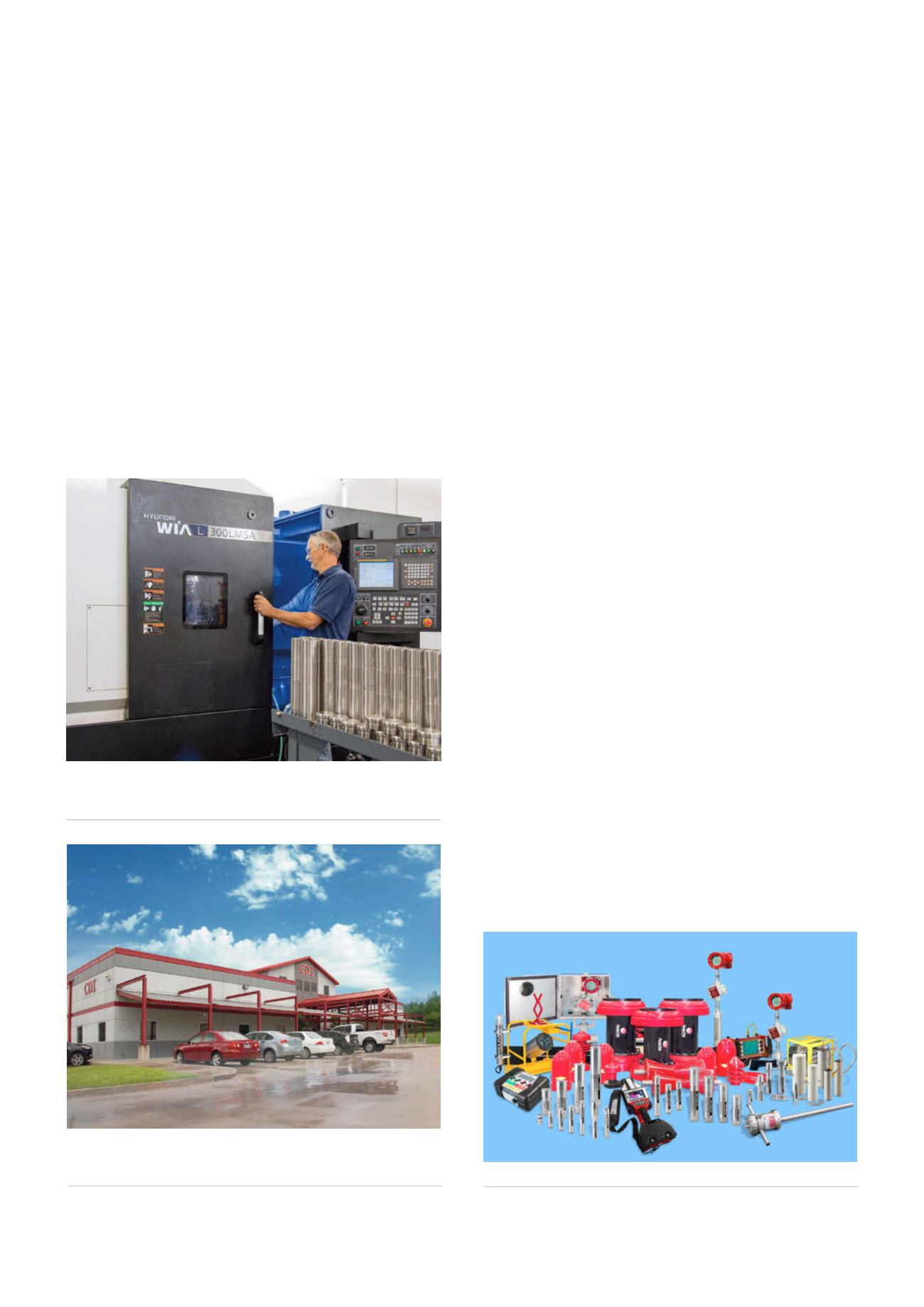
first pipeline was swabbed out with a wad of straw bound in
barbed wire more than a century ago.
Keeping the juices (and gases) flowing
Today, pigging still means clearing a pipeline of debris and
residue. But that’s not all: inspection, testing, gauging, batch
separation, displacement, dewatering, drying, filming (coating
interior walls of a pipeline) and other applications require
specialised pigs of many sizes and shapes, and constructed of
various materials.
As always in the business world, success means finding
a need and providing a solution. Two North American
companies have done just that.
The heart of Canada’s oil and gas pipeline network is in
Alberta. Amongst the key players of a burgeoning energy
supply and service industry is Apache Pipeline Products of
Edmonton. Apache was formed in 1986 and quickly became
a leading manufacturer of pipeline cleaning and maintenance
equipment. The company’s 36 000 ft
2
facility satisfies all of
the industry’s needs, including custom polyurethane-moulded
requirements. Its product line includes foam and solid cast
urethane pigs, scraper cups, jetting cups, conical cups, guide
and sealer discs, and gauge plates.
“Our tag line is ‘World Class – World Wide’ and we take
pride in manufacturing high quality products and providing our
customers with excellent service,” says Don McNabb, Director
of Sales, Apache Pipeline Products.
Apache’s flagship product is the patented Apache pigPRO
Intrusive pig passage Indicator. It is available in three models;
the basic Series 57 is a visual flag indicator with manual reset.
It includes a thread mounting nipple, standard lower housing
with fluorocarbon O-rings, and a hemispherical plunger with
a flag assembly. Series 55 is an electrical indicator with an
automatic reset. It includes the same features as the 57 series
without visual flag but has a weather-sealed explosion-proof
micro switch. The Series 53 is a combined visual/electrical
indicator with manual/automatic reset. It has the same
features of the 57 and 55 series as well as a weather-sealed
explosion-proof limit switch. The switches on both the 55 and
53 series are NEMA rated, UL-listed and CSA-certified to suit
most applications.
All three are available with optional flange base mounting,
manufactured to mount to existing flanged connections
and are available in class 150, 300, 600, or 900 ANSI flanges.
Conversions kits are also available that enable installation
onto the mountings of other manufacturers.
It’s 3 AM. Do you know where your pigs are?
But it doesn’t end there. A pigging mission isn’t accomplished
until the pig is recovered and the pipeline is back in business.
With so many pigs circulating through the world’s pipelines,
somebody, or something, has to keep track of them. That
‘somebody’ is CDI in Oklahoma, USA, deep in the heart of
America’s pipeline country. While Apache was perfecting its
product line, CDI was busy developing an electromagnetic
transmitter for pigs.
Such a transmitter had to be rugged enough to withstand
the pressures, temperatures and materials of a pipeline
environment. It had to be powerful enough to send a
surface-detectable signal yet offer low power consumption.
Figure 1.
Like all CDI products, these pig tracking transmitter
cases were built completely in-house on one of six fully-
automated CNC machines.
Figure 2.
CDI Headquarters, Broken Arrow, Oklahoma has
recently expanded to accommodate production, inventory, and
a training facility.
Figure 3.
Just a few of the many Apache and CDI products.
30
World Pipelines
/
JULY 2015


